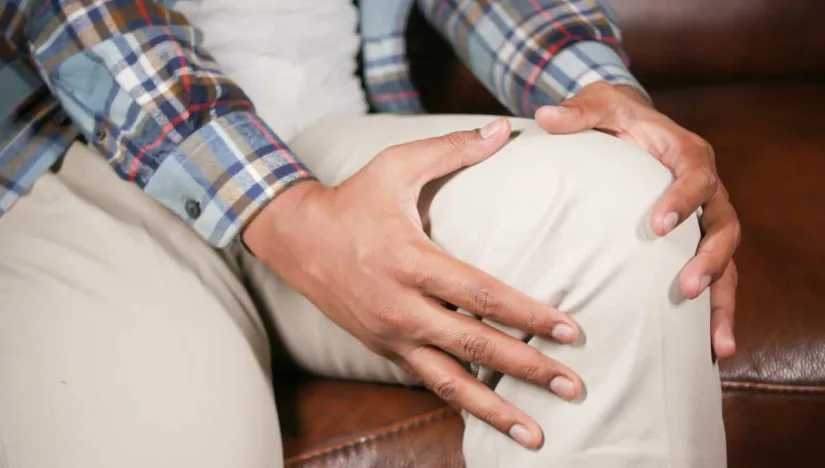To stay fit and carry out daily life activities effectively you need healthy and strong joints. By adapting some useful habits, you can avoid joint pain and weakness and guard your joints against injury and keep them healthy for years.
Joints and structure surrounding it help in smooth movement of body parts including knees, elbows, hips, head, fingers etc. A joint is basically a connection between two bones. Joints are surrounded by a tissue called cartilage and a fluid called synovial fluid, which makes sure that bones do not rub against each other during the movement of joints.
With an increase in age, weight or in case of an injury, your cartilage may suffer, wear and tear that can result in damaged joints. This can also lead to joint pain, weakness in the joints and even the problem of arthritis. The best way to avoid such situations is by keeping your joints, bones, ligaments and muscles strong. Following are the 5 most commonly referred tips by orthopedic surgeons for avoiding joint pain.
Table of Contents
1- Exercise
Exercise helps you stay fit and lose extra pounds. Maintaining a balanced and healthy weight is the key to healthy joints. According to orthopedics and researchers, exercises like aerobics, cardio, swimming and bicycling can reduce joint swelling and pain. If you are not motivated enough to carry out these exercises, then at least walk.
Don’t just sit still, glued to your chair eating carbs and sugar, you need to get up and start moving. Even during your work hours take regular breaks for stretching. Use stairs instead of the lift or elevator. If you are overweight, reducing weight can take off undue pressure from your knees and hips and significantly reduce wear and tear and routine joint pain. This reduces the chances and progression of arthritis too.
It is advisable to adopt exercise as a way of life and prevention, but even during arthritis, it is advised to remain active despite an initial resistance due to stiffness and pain. Exercise will in fact improve upon these conditions. While high-impact activities such as jumping and running may not be the best solution, aerobics and swimming serve as most effective. Regular exercise means a healthy supply of blood pumping in your body, which in turn leads to well-nourished cartilages.
2- Build Muscles
Strong muscles provide support to your joints. If your muscles are not strong enough, all the pressure of your body weight and movements is on your joints including knees, hips, spine etc. Get in touch with a certified personal trainer and make a habit of doing weight training exercises. It will make your muscles and surrounding ligaments strong so that your joints do not bear all the pressure.
Muscles will also absorb some of the shock that your joints undergo. Avoid doing exercises without professional consultation because doing the exercises incorrectly can lead to injuries. Ask your trainer to guide you towards strengthening your core i-e chest, back and abdomen.
A strong core helps you in keeping your balance and prevent incidents that can damage your joints such as falls.
3- Maintain Appropriate Postures
Good postures guard your muscles and joints. By standing and sitting straight during work can protect your joints from stress. Similarly, there are postures for lifting and carrying things.
For instance, if you are carrying a backpack, don’t sling it over one shoulder; instead, put it over both shoulders so that the weight of the backpack is equally balanced on both shoulders. Slinging it over only one side will put more stress on your joints, ultimately resulting in joint pain. Similarly, when lifting, instead of bending at your back, bend at your knees to use your legs that have the biggest muscles of your body for support.
If you maintain an upright posture, your body will get accustomed to it over time- same goes with bad posture, which will then be difficult to correct and might require body braces to alleviate pain, general discomfort and aesthetics.
4- Use Protection
Prevention is better than cure, therefore it is better to protect your joints using accessories. Always wear guards, helmet, ankle/knee/elbow/wrist pads while taking part in high risk activities. It doesn’t matter how skillful you are in doing activities such as bike riding, squatting, hiking etc. you should guard your joints and bones by using protective accessories.
One lapse in concentration that damages your cartilage and joints can lead you to a lifetime trouble! This applies while playing sports such as basketball and football in particular, where ankle and knee injuries are most likely to occur.
Once your joints become prone to such injuries, chances of recurrence increase drastically, which is why prevention becomes even more important once injured to prevent an even more harmful injury.
5- Maintain a Healthy Diet
In parallel to exercise, maintaining a healthy diet is also crucial for your body. Healthy diet helps you build strong bones and muscles that are good for your joints. Professional trainers and nutritionists can provide you a diet plan according to your daily activity and body measurements.
For your bones and joints, make sure your daily intake of calcium is sufficient. Include milk, yogurt, broccoli and fortified foods in your diet. If you are not interested in such foods, ask your doctor if you can make use of calcium supplements.
We understand the importance of your bones and joints. If you or your loved one is facing any issue related to bones or joints, you can book an appointment with a top Orthopedic surgeon in Multan, Karachi and Islamabad through oladoc.com. Or call our helpline at 042 3890 0939 for assistance to find the RIGHT Doctor for your bone and joint needs.






